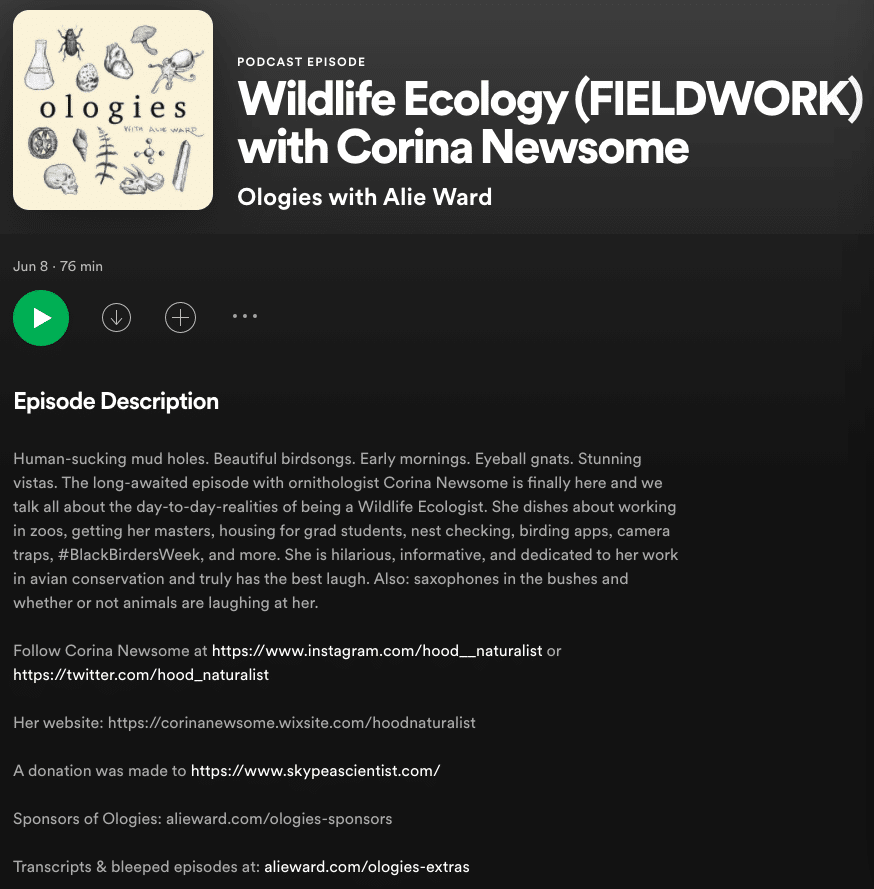Is Podcasting the New Blogging?
It seems like everyone has a podcast these days—your brother-in-law, your friend from college, and now, your client. Whether they want to improve on an existing catalog or are just considering adding a podcast to their content arsenal, there’s a lot of potential value in podcast SEO.
As of 2021, over 40% of Americans age 12 and older have listened to a podcast in the last week. And there’s plenty of options to choose from, with over 500,000 active podcasts on Apple Podcasts alone (Podcast Industry Insights courtesy of Daniel J. Lewis). There are more listeners of all demographics than ever—but with that comes more competition.
While certain basic SEO best practices can help you rise to the top of the charts, there are a few challenges that are unique to podcast marketing. From using SEO best practices to get the most out of existing content to learning the ins and outs of podcatcher (podcast listening app) search functions, here are our tips for acing the podcast SEO game.
Table of Contents
- Podcast episode transcriptions
- Writing insightful show notes
- Podcast hosting options
- Understanding podcast directories
- Link-building with episodes
- Leveraging keywords in podcast and episode titles
- Choosing the best category for your podcast
- Google Rich Results for podcasts
Get the most out of your existing content
Do you or your client already have a podcast? Good news! That means there’s a wealth of original content just waiting to be leveraged. But, how do you take that content from audio to a space where search engines will recognize the value?
Transcribe your podcast episodes
If your client is not already transcribing their shows, this is the number one thing you can recommend to them. This is an important accessibility measure as well, but like a lot of web accessibility practices, there’s a significant overlap between helping people and bots understand your content.
Hosting episode transcriptions on your site can exponentially boost the keyword-rich content you have without having to lift a copywriting finger. The average English speaker speaks at a pace of 100-200 words per minute, so a 30-minute podcast episode can range from 3000 to 6000 words of content! Not bad, right?
While some podcast hosting platforms offer space for transcripts, we’d recommend also posting them on your site to reap the most SEO benefits. Here’s an easy way to share: If you’re on WordPress or another platform with a healthy blogging function, make yourself a Transcripts category on your blog and share transcripts as individual posts.
The show notes must go on
If you’re not familiar with show notes, they are a good tool to get to know. So, what are show notes, exactly? They’re a short teaser of the main highlights from each episode and contain any other links or resources the audience may need (think links to the show’s social media, transcripts, sources, etc.).
Here’s an example of how show notes appear in an individual episode in Spotify, which is similar to most other major platforms.

Thorough show notes that include specific keywords give audience members and search bots a clear picture of what to expect in each episode.
If you’re already targeting all these keywords on a large scale with episode transcripts, do you need transcripts AND show notes?
Short answer, yes.
Long answer, still yes. Imagine that show notes are essentially an episode’s meta description. While your transcripts (and episode audio) are the primetime content, the show notes are your first chance to entice people to engage. Just like with SERP results, your potential audience is usually scanning to quickly determine if you have what they want, and so are search engine crawlers.
From an SEO standpoint, a strong meta description depends on making the most of a limited character count with strategic keywords, a strong value proposition, and a unique call-to-action. Good show notes are the same, so if you already know how to write a good meta description, writing show notes (or coaching your clients on how to) will be a breeze!
Here’s our checklist for writing great podcast show notes:
- A 200-300 word summary of the episode: hit the main topics and those good keywords, but don’t give too much away! This is also a great place to share a memorable quote to pique interest and give new fans easy material to share the episode with.
- Specific calls-to-action: encourage folks to listen to the episode, of course, but provide more opportunities to engage. Most commonly, this is where you can ask people to follow the show or write a review. Some other examples of show note CTAS are:
- “Have you ever tried/done/experienced (topic?)”
- “What other advice/insight would you give on (topic)?”
- “Check out (resource) we talked about in the show!”
- “If you want to learn more about (topic), check out (client’s product or service).”
- Link to additional resources related to the show… such as your client’s site. Bonus external links!
- A brief thanks for listening.
If you want to go the extra mile, many podcast hosting platforms allow you to add timestamps to your episodes to mark sections and allow listeners to navigate to the content they’re interested in quickly. But whatever you decide to do, keep it short, sweet, and consistent between episodes.
SEO basics for podcast directories
One main difference between SEO practices for websites and podcasts is that podcasts tend to have a lot more parties involved in who is actually delivering and assessing content. Instead of putting content on a site, and search engines crawling that site, podcasts are usually hosted on external platforms. These platforms use an RSS feed to communicate with a wide range of unique directories with their own rules. This can be a little out of the SEO ordinary, because Google is not your boss here.
Sure, some people will sit down at their desktop computer, type in Google.com, and search “(your industry) pod casts,” but most people who want to listen to podcasts are, well… already listening to podcasts, most likely on one of the many podcatchers available. However, podcatchers are search engines too! They also value thoughtfully optimized episode titles and show notes, user reviews, and using correct categorization.
What you need to know about podcast hosts & directories
To host or not to host, that is the question
Should you host audio files on your own site? While there are some arguments for retaining the source authority of your content, we’d definitely recommend outsourcing this task to one of the many podcast hosting sites out there. For one, although Google has some audio crawling ability, it’s not a significant part of their algorithm as of yet.
Secondly, a hosting platform worth its salt will offer you better download speeds and less bandwidth strain, a streamlined connection to podcast directories, embeddable players for your site, and valuable audience metrics. We’ve already gone into depth about the importance of page experience & site speed in your Google rankings, so skip bogging down your site and let someone else’s server do the heavy lifting.
Who are the biggest podcast directories?
While there are more podcast apps hitting the internet every day, many of them pull their information from larger directories, and many more of them just don’t have the user base to be significant. The main three to keep an eye on are Apple Podcasts (formerly iTunes), Google Podcasts, and Spotify. And while each of these platforms has its own unique idiosyncrasies, your SEO knowledge is important across these three and beyond.
Now that you’re up to speed on the main players, here’s how to get the most from these directories and hosts.
Linking to your Episodes
Just because you’re not hosting the show on your own site doesn’t mean you can’t make use of that content! We all know how valuable quality in- and out-bound links can be for SEO performance, so linking to episodes is a great way to get the most from all of those listening platforms.
Whether it’s through a blog post category, a separate page, or in a client’s newsletter, it’s important to make links to episodes accessible. We recommend sharing those snazzy show notes we wrote earlier, an embedded player, AND links to the episode on all the major platforms.
Many players offer HTML code for embedded buttons, but there are also services like Chartable that offer a one-stop-shop link to just about any podcast player your audience prefers. The user experience principle remains the same for podcasts as any other engagement funnel: make it as simple as possible! If you make it easy for audience members to listen the way they prefer to, you’ll have much stronger engagement.
Adding all of those listening links not only makes getting your podcast into ears easier, it can improve your link quality and domain authority over time as well.
Here’s a nice example of a podcast episode page on the host’s personal website:
(source: https://www.alieward.com/ologies/proptology)
A punchy version of the episode description opens the page, with lots of opportunities to listen nearby. If the audience is interested, the rest of the links and resources for this episode are further down on the page below the player.
Leveraging keywords in podcast and episode titles
When trying to fit the most effective keywords in a title, we’d recommend moderation. Particularly in Apple Podcasts, the highest-traffic podcast directory, keyword stuffing can result in your client’s show getting completely removed from the directory (and subsequently, all of the directories that pull their data from Apple Podcasts). Yikes. It’s unfortunate, because Apple purportedly only indexes episode titles and authors, but this is where your expertise comes in to uncover the right mix of high popularity, low competition, and descriptive impact that makes a keyword effective.
Unfortunately, Apple can be a bit vague on what information they consider to be extraneous. But a rule of thumb is to avoid separator characters like “|” and “–,” keep anything descriptive in the description, and focus on optimizing episode titles for the most bang for your buck.
For example, if your client’s podcast is called “The Bagel Show,” and they talk about bagels, you might be tempted to get the most out of the 250 character limit and list their show as “The Bagel Show– bagel brand reviews, professional bagel baker experts, & cream cheese recommendations from bagel and bialy enthusiast for the best breakfasts,” but that will likely flag Apple’s filters in a major way.
Instead, stick with “The Bagel Show,” or “The Bagel Show Breakfast Reviews,” and save those extra keywords for upcoming episode titles like “Cream Cheese Recommendations from Expert Breakfast Chefs.”
Categorizing a podcast
Utilizing appropriate tags and categories for a podcast’s directory listing follows a lot of the same strategies as categorizing blog posts, which you may already be familiar with. However, one main difference is that while most hosting platforms allow you to add your own tags for directories to parse, those directories have set categories you have to find a way to fit in.
This may be straightforward for some shows, but if you’re not sure which category suits a podcast best, here’s our advice: choose the top few categories you feel like they could apply, and start with the less competitive one because you’ll have more chance of standing out. You can always change your category at a later date and experiment with what works best.
Rich Results
We covered Apple Podcasts and Spotify, but what about Google Podcasts? Google started indexing podcasts in 2019, and then released their own directory, which is now a major source of information for many other podcatchers. Getting a podcast indexed by Google is a different process than submitting it to the Google Podcasts app (here’s the official lowdown), but both are helpful for gaining podcast traction and ultimately increasing your client’s brand awareness and value.
First, make sure your client’s podcast is submitted to Google Podcasts. Instructions on how to do so are here, and once your show is indexed by Google, it can show up in top-level search results like so:
Now, we’re back in good old search engine optimization territory when dealing with Google’s indexing.
We’ve already shared ways to implement best practices in other areas of podcast publishing, but here’s one last recommendation:
Consider adding PodcastSeries and PodcastEpisode schema to your pages—like other structured data types such as Local and SEO schema, this allows your pages to show up as more engaging links on SERPs.
An Evolving SEO Strategy
Just like working on a website, podcast SEO is an ongoing process—there aren’t any quick tips or tricks that will mean you’ve “done SEO” once and for all. It’s a constant process of looking at what works, staying informed on how your audience grows and changes, and keeping up to date with new technology developments.
As your client’s podcast will grow and evolve the longer they produce it, so will their audience, and in turn, the strategies you can use to connect with them. But the things we’ve recommended above are the first important steps in showing the value of your client’s podcast to the people who need to see it, and, more importantly, leveraging a rich source of content as part of a holistic SEO strategy.



